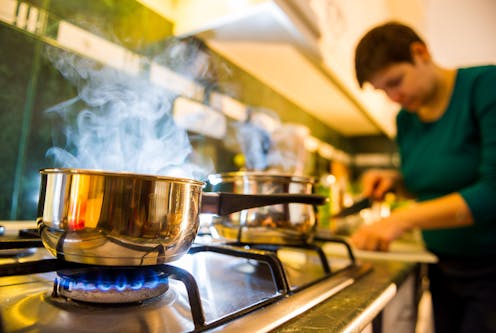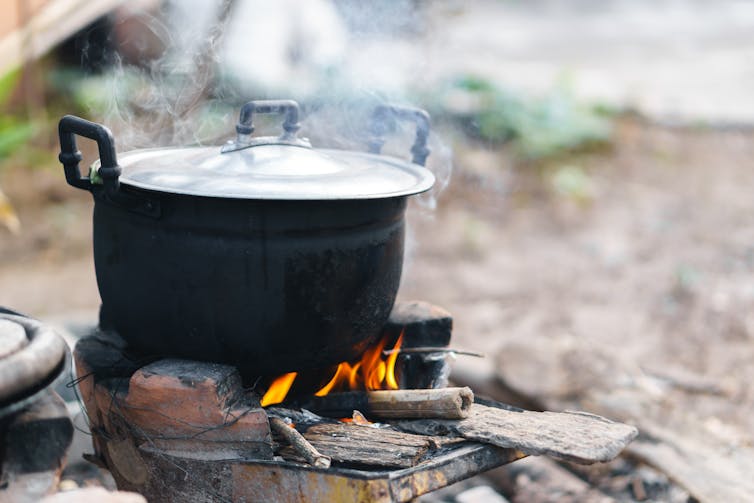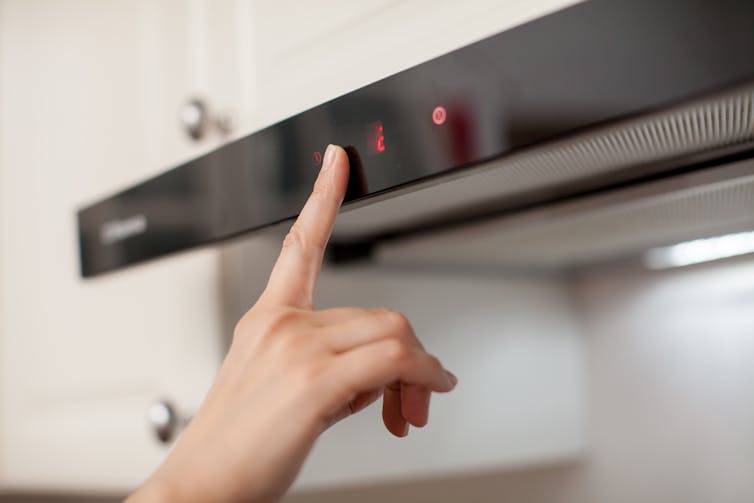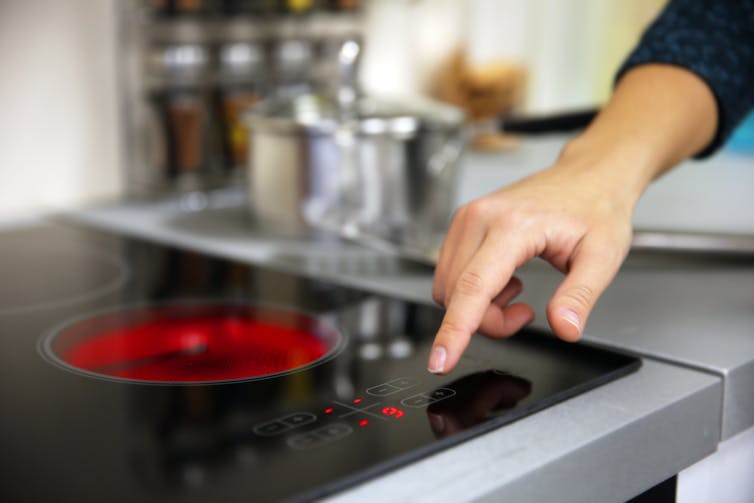
Cooking can pollute the air inside your house to such an extent that breathing in your kitchen may be as safe as breathing by a busy roadside. A poor supply of oxygen can prevent gas or solid fuels burning properly, which produces harmful pollutants such as fine particulate matter and nitrogen oxides which can irritate lungs, increase the risk of asthma, lung cancer and heart disease such as stroke.
The extent of pollution depends on the types of fuel used. In the developed world, the most common fuel is gas and electricity. In developing countries, people depend on more polluting options such as coal, charcoal, wood and cow dung. Children, the elderly, pregnant women and those with existing health conditions are the most vulnerable to the resulting pollution.
About one in eight cases of childhood asthma in the US has been linked to gas cooking stoves. President Biden’s Inflation Reduction Act will offer households up to US$1,340 to switch from a gas to an electric induction stove.
With colleagues, we measured fine particulate matter concentration in 60 different types of kitchens across 12 cities in Asia, the Middle East, Africa and South America. About 33% of homes used natural gas for cooking, followed by liquid petroleum gas (LPG, 27%), electric stoves (17%), charcoal (14%), kerosene (8%) and ethanol (1%). Interestingly, in-kitchen exposure to this pollution was only 30% lower when using natural gas compared with one of the most polluting fuels, charcoal.

Policies to replace gas stoves are slow and difficult to implement. If you have one in your home, there are things you can do now to reduce your exposure. Here are our top seven.
1. Fry less
Frying emits more particulate pollution than other methods and can contribute more than half of the total emissions during cooking. Boil and steam food where possible.
2. Shorten cooking sessions
Choose recipes and meals that take less time to cook to reduce overall in-kitchen pollution. Vegetarian meals are usually simple, fast and healthy to cook.
3. Monitor kitchen air quality
Exposure to indoor carbon dioxide (CO₂) levels exceeding 1,000 parts per million (ppm) can cause headaches and drowsiness, while airborne fine particle concentrations over 15 μgm³ can harm your health. Monitor levels of these pollutants in your kitchen and take steps to improve ventilation when safe levels are exceeded.
4. Increase ventilation
Turning on an extraction fan during cooking can reduce your average exposure to airborne fine particles and reduce in-kitchen humidity by up to 40%. Opening kitchen windows and doors during cooking can reduce CO₂ levels by up to 54% more than opening doors alone. Mechanical ventilation using an extraction fan coupled with open doors and windows can reduce your in-kitchen exposure by a factor of two compared with natural ventilation alone.

5. Use cleaner fuels
Using natural gas instead of charcoal can reduce your average fine particle exposure during cooking by 1.3 times – and 3.1 for LPG. Kitchens using a combination of LPG and electric cookers reduced in-kitchen CO₂ levels by more than a third compared with those using kerosene.
6. Stay out of the kitchen
Congregating in the kitchen while someone is cooking exposes more people to emissions unnecessarily. It also increases the CO₂ levels, which can be over 7% higher with two or more occupants compared with one.
7. Reduce fuel stacking
Relying on multiple fuel types in the kitchen, like a combination of an electric oven and a gas stove, is referred to as fuel stacking and it can prevent people adopting clean cooking practices. People can be encouraged to switch to cleaner cooking fuels and stoves if the relevant fuels and compatible cookstoves and devices are made accessible and affordable.

Switching from gas to electric cooking is an obvious choice to reduce in-kitchen exposure to air pollutants and also limit the emissions of greenhouse gases. Policies, infrastructure and public information campaigns are needed to hasten this switch.
Each year 3.2 million people die prematurely from illnesses associated with household air pollution, largely in the developing world where people lack access to gas for cooking. These areas, mostly rural, are also unlikely to have secure supplies of electricity. Alternative options, such as solar-powered stoves, are much more accessible and affordable, and making such options more widely available could help more people get rid of polluting kitchen equipment.

Don’t have time to read about climate change as much as you’d like?
Get a weekly roundup in your inbox instead. Every Wednesday, The Conversation’s environment editor writes Imagine, a short email that goes a little deeper into just one climate issue. Join the 10,000+ readers who’ve subscribed so far.
Prashant Kumar receives funding from the EPSRC, NERC, ESRC, and Horizon Europe, a charity and industrial organisation. He is affiliated with the not-for-profit organisation Zero Carbon Guildford.
This article was originally published on The Conversation. Read the original article.







